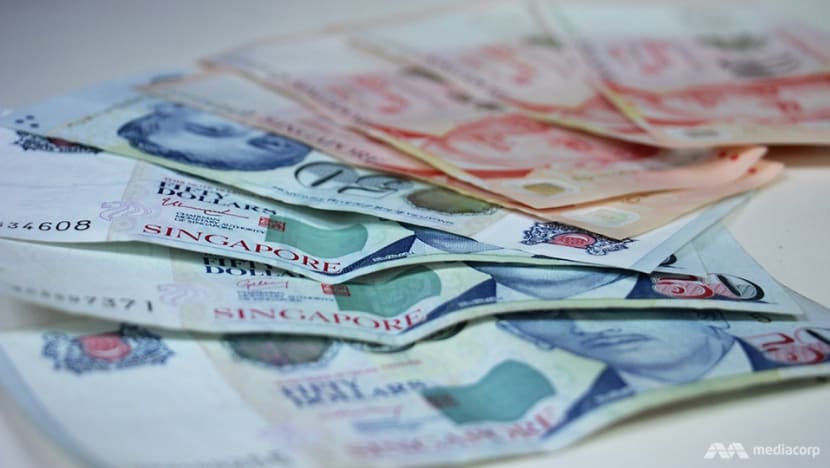Commentary: Why the need to raise the GST now?
Come Feb 18, during Budget 2022, Singaporeans will finally learn when the planned increase in the Goods and Services Tax will take effect. Economist Terence Ho explains what this tax revenue will be used for.

SINGAPORE: When then Finance Minister Heng Swee Keat, announced the Goods and Services Tax (GST) hike in 2018, he said it was necessary to strengthen Singapore’s revenues, given increases in recurrent spending on healthcare, security and other social needs.
He said the GST would be raised from 7 per cent to 9 per cent sometime between 2021 and 2025, depending on the state of the economy and public finances, and likely earlier rather than later within this period.
The GST hike was held off last year as Singapore grappled with the economic fallout of COVID-19. However, Prime Minister Lee Hsien Loong indicated in his recent New Year message that the Government will have to “start moving” on the hike in Budget 2022 as Singapore emerges from the pandemic.
Several questions may come to mind. First, what exactly is driving the increase in public expenditure that necessitates a higher GST? Second, can Singapore tap other revenue streams in lieu of raising the GST? Third, what impact will a higher GST have on lower-income Singaporeans, particularly as inflation picks up?
AGEING DEMOGRAPHIC AMONG THE KEY DRIVERS
Since the GST was last raised in 2007, and even before the pandemic, public expenditure has grown significantly. Between 2007 and 2019, government spending rose from S$33 billion to S$75 billion a year.
Social spending nearly tripled over this period. Government healthcare expenditure, in particular, soared from S$2.2 billion to S$11.3 billion.
The surge in healthcare spending comes as no surprise, given Singapore’s demographic transition. By some estimates, Singapore is ageing faster than any other country bar South Korea in terms of the projected increase in senior population share between now and 2050. By 2030, nearly one in four citizens here will be aged 65 and above, up from about one in eight in 2015.
They are three to four times more likely to be admitted to hospital compared with younger Singaporeans, and once admitted, typically stay for close to twice as long. On average, a senior receives more than six times the annual public healthcare subsidies received by those under 65.
Costs have also risen with advances in medical technology and better standards of care. For instance, the discovery of targetable genes has led to new, more expensive cancer therapies. Surgical procedures such as total knee replacement are also becoming more prevalent.
To be sure, there is scope to achieve greater efficiency in healthcare spending. Insurance reform, including the new co-payment requirement for Integrated Shield Plan riders, would help, as would the rebalancing of care between acute hospitals and step-down facilities.
That said, Singapore’s healthcare efficiency is high by international standards: In 2020, Singapore topped the Bloomberg Health-Efficiency Index, which was adjusted to include the impact of COVID-19.
SPENDING NEEDED TO KEEP INEQUALITY IN CHECK
Greater spending is also needed to sustain social mobility and keep inequality in check. For instance, the Workfare Income Supplement (WIS) and Silver Support schemes have been significantly enhanced since their introduction to provide greater support for lower-income workers and retirees.
Public spending on early childhood education and lifelong learning has also risen considerably. Such investment is important in giving our young the best start in life, and to help citizens in the workforce continually refresh their skills to keep up with changing market demands.
As collective aspirations grow, the Government has taken on a greater role in allocating resources for programmes and services that benefit all Singaporeans, rather than just leaving this to the market.

WHERE DOES REVENUE COME FROM?
To meet rising expenditure needs, the Government has expanded and diversified revenue streams over the years.
Property taxes were made more progressive in 2010 and 2013, while higher tax rates were imposed on luxury cars from 2013. Changes in personal income taxes that took effect in 2012 and 2017 increased the tax contributions from high-income earners.
The most significant growth in revenues has come from the introduction of the Net Investment Returns Contribution (NIRC) framework in 2009, and its expansion to include Temasek Holdings in 2016. With this, the revenue from Singapore’s investment returns grew to S$17 billion in 2019 and now accounts for about a fifth of the Government’s annual budget.
In the coming years, several factors may buoy revenues. Stamp duty collection is likely to remain elevated amid the property boom, while the carbon tax rate is set to increase. Some have suggested that the proposed global minimum corporate tax rate could also lead to higher corporate tax receipts in Singapore.
Finally, the Government has passed legislation enabling it to borrow to fund long-term infrastructure development, easing the pressure on the fiscal system.
MORE IS STILL NEEDED
These developments, however, do not preclude the need to seek other sources of revenue.
Asset tax revenues rise and fall with the market, while higher carbon tax receipts will only partly offset the increasing cost of climate mitigation and adaptation — measures projected to cost S$100 billion.
The impact of a global minimum corporate tax rate on Singapore’s fiscal position will depend on details yet to be worked out, and it is even possible that Singapore may lose tax revenue to other jurisdictions.
The Government has also indicated that it will not borrow to fund recurrent expenditure as a matter of principle, so that the burden of spending is not transferred to future generations.
While there are calls for Singapore to tap the past reserves for more income, their investment returns are already Singapore’s largest source of public revenue, larger than any single tax.
The appropriate balance between extracting more for current spending and growing the principal to benefit future generations is ultimately a political judgement call.
GST A STABLE TAX
Among potential sources of additional revenue, the GST is attractive in that it is an efficient tax, with a relatively low cost of collection and administration.
Compared with income and wealth taxes, GST revenue is less correlated with business cycles and therefore more stable and predictable, while being harder to circumvent through tax planning.
This is why most countries, developed and developing, have adopted a GST or value-added tax, many at rates higher than Singapore’s.
The drawback is that GST is a regressive tax — the less well-off tend to pay more GST relative to their incomes. However, it is important to assess a fiscal system in its totality.

The regressive impact of the GST is offset by progressive income taxes and significant fiscal transfers including WIS, Silver Support and the GST Voucher scheme. In fact, the expansion of these transfers has increased the overall progressivity of the system over the past two decades.
CUSHIONING THE IMPACT, SEEKING PUBLIC BUY-IN
Still, there are concerns that the GST increase will raise costs at a time when inflation is gathering pace globally. Prices here are rising in tandem with the cost of oil, food and raw materials; the Government projects a core inflation rate of 1 to 2 per cent this year, higher than in the past two years.
The S$6 billion Assurance Package, announced in Budget 2020, will offset the impact of a higher GST by five years for most Singaporeans and by 10 years for the lower-income group. In designing this support, the Government could seek to address near-term cost pressures in addition to the impact of the GST increase.
Besides addressing costs, two other factors are critical to public buy-in for the GST hike. First, the Government must be seen to be exercising prudence in public expenditure — whether in infrastructure development, economic programmes or social spending. Otherwise, evidence of wastage or extravagance would weaken the case for raising GST.
Second, the overall fiscal system must remain equitable, with the better-off contributing their fair share of taxes. To this end, the Government may want to consider strengthening the progressivity of asset taxes further or introducing new forms of wealth taxes in due course.
However, there are limits to how much additional revenue such taxation could net without jeopardising Singapore’s attractiveness as a business and wealth hub.
A GST increase is never an easy sell. It will cause some unhappiness, but this long-awaited move is part of the broader effort to help shore up Singapore’s revenues, giving the nation the wherewithal to tackle the challenges that lie ahead.
Terence Ho is Associate Professor in Practice at the Lee Kuan Yew School of Public Policy. He is the author of Refreshing the Singapore System: Recalibrating Socio-Economic Policy for the 21st Century (World Scientific, 2021).




















